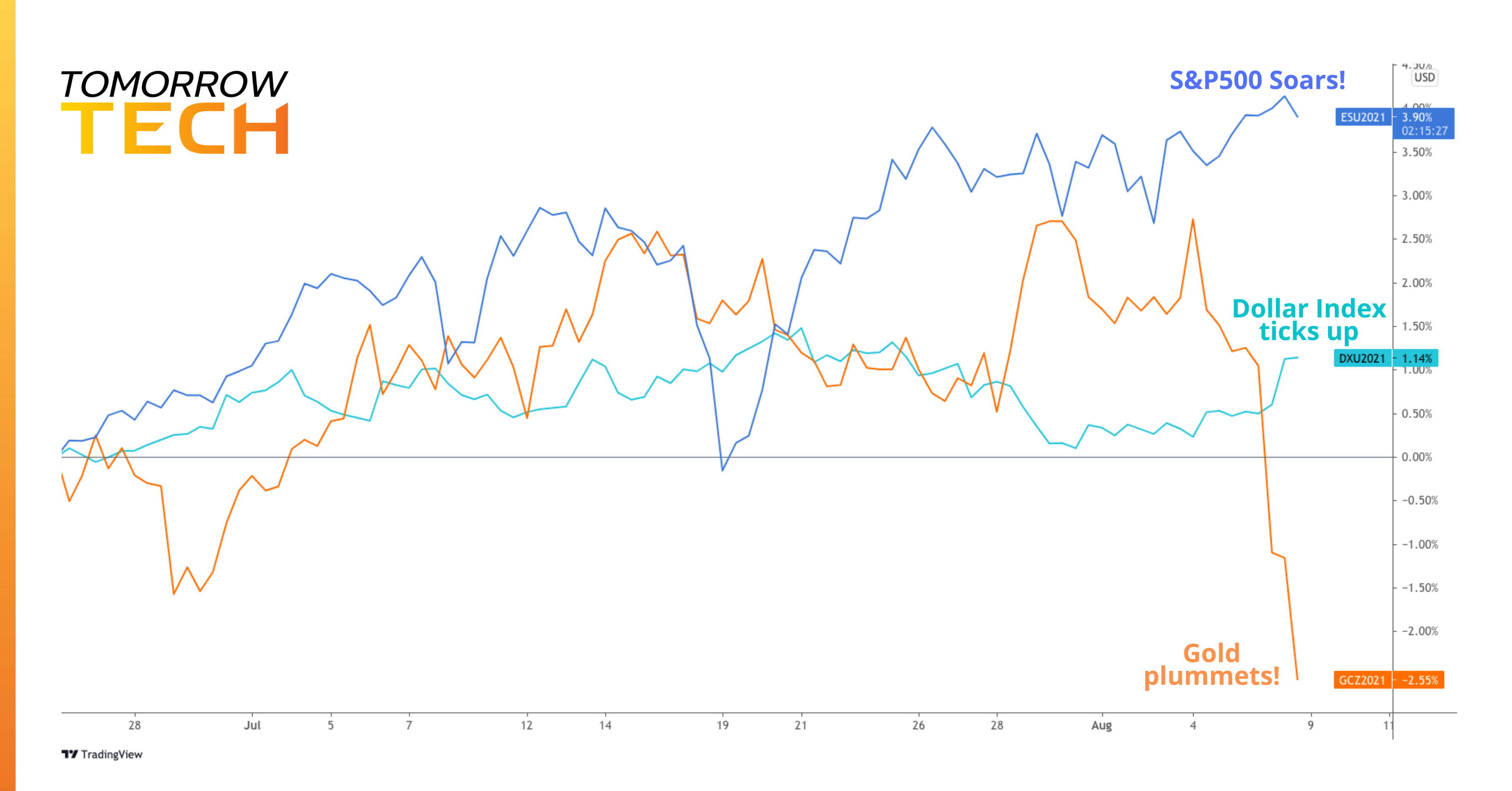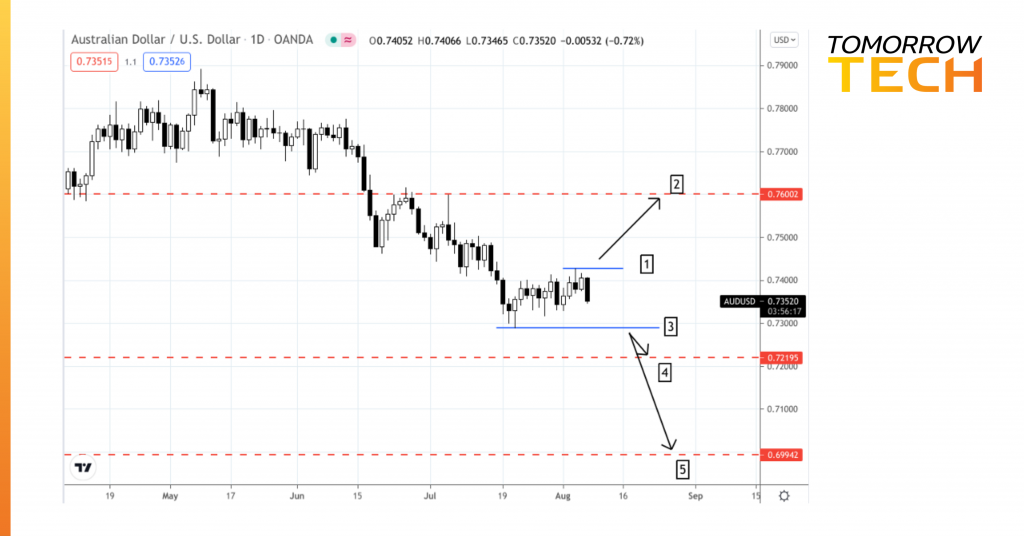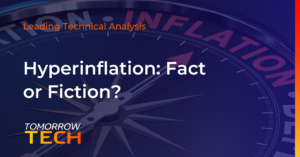The S&P 500 jumps to another record high boosted by a strong jobs report. But what investors are not seeing in the numbers often matters more than what the numbers actually reveal.
The good news is that the US economy added 943,000 jobs in July, slightly above the 900k third-party consensus. The hiring blitz made strong advances in leisure and hospitality (around 380k jobs) and local education and government jobs (around 240k jobs).
The market is apparently thinking it’s time to party—risk on!—and dump the safe-haven assets. Meanwhile, the dollar index ticks up slightly within the range that’s still defined by its 2020 lows.
The unemployment rate also ticked down to 5.4% from last month’s 5.9%. Now, the “bad”:
US average hourly earnings rose 4% according to the latest US Bureau of Labor Statistics report…but…CPI is up 5.4%! Are costs rising faster and higher than their wage increases? Something to think about.
Meanwhile, labour participation rate remains well below pre-pandemic levels
The potentially ugly part. While the M1 money supply remains at historically record-shattering levels (remember, over 20% of all USD in existence was created in 2020 alone)…
Hardly anyone is spending money…
Mentions of higher inflation expectations are up in corporate earnings conference calls by 1,100%. What will be the effect of all that money in the system on consumer prices once people begin spending that money at an accelerated rate?
Economic News Watch
Pay close attention to the inflation measures on Wednesday and Thursday reports: CPI, PPI, and Consumer Inflation Expectations.
Swing Trading the AUD/USD Next Week
Looking at the price action, we see an intermediate-term downtrend. The “strategic” consideration is, of course, the inflation reports released in both countries this week.
On a more “tactical” level, a swing trader can exploit the sentiment based on a simple swing low/high setup. The price targets would naturally fall on historical near-term to intermediate-term support and resistance.
A break above 0.74267 at [1] would be met by resistance at 0.75992 at [2]. On the bearish side, a break below [3] at 0.72896 would be met by support near the 0.7220 range [4] and below that, the November 2020 low at the 0.7010 range as shown at [5]. Swing trading the swing lows and highs isn’t rocket science, but it is a common setup that you can often see clearly when a market is trending. And since June, following a 6-month Head & Shoulders pattern, the AUD/USD began trending clearly once again, and the near-term trend is pointing downward.










